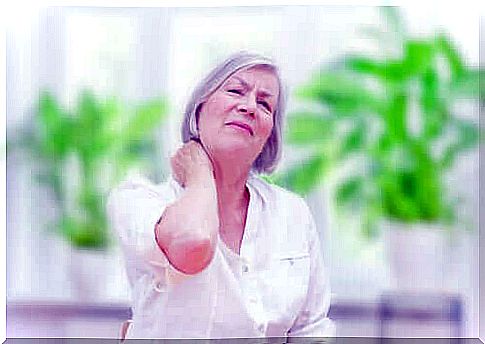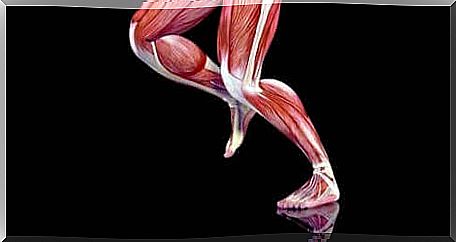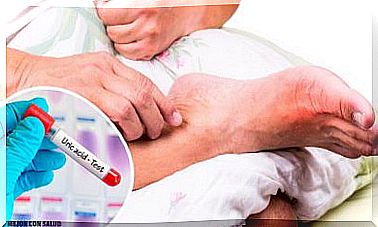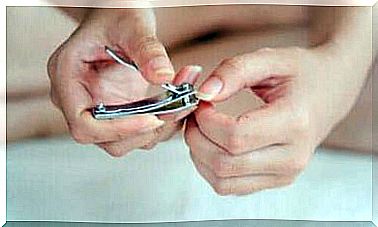Trigger Points: What Are They And How Do You Treat Them?

Muscle pain is a common thing that adults complain about both during doctor’s appointments and when visiting the emergency room. Today we will look at myofascial syndrome, explain what trigger points are and discuss possible treatment options.
The musculoskeletal system represents almost 50% of an adult’s weight. It should therefore come as no surprise that muscle pain is a common cause of discomfort. Trigger points are fundamental in explaining myofascial syndrome. These points refer to specific painful regions in the muscles.
What are trigger points?
A trigger point is a small hyperirritable point in the muscle. In other words, it is a small region relative to the rest of the muscle, and it hurts especially under pressure.
Myofascial syndrome is therefore a set of muscle pains caused by trigger points and their stimulation. In other words, we cannot assess this syndrome without identifying where these regions are and what they respond to.
Within myofascial syndrome, when examining the muscle, one can observe a specific, site-specific pain that is part of a larger tangible band. This band tends to be tense, almost like a contraction of muscle fibers.
Therefore, the term “trigger point” refers to this specific area of pain. Experts have discovered at least 255 triggers that are distributed between the various muscles in the body. In fact, no body parts are exempt from having them.
Usually, the patient can even point out the location of this small region that hurts under pressure. They may also experience spontaneous pain. No one knows one’s body better than oneself, and this is one of the key principles for approaching chronic pain.

What are the symptoms of trigger points?
Trigger points are all over the body and in almost all the muscles. However, there are areas in the body that are more prone to developing myofascial pain.
Among these we find the following:
- Muscles in the neck
- Shoulder belt : The area around the trapezius muscle
- Pelvic belt: Pelvic net
- Chewing muscles
The symptoms of stimulation of a trigger point are mainly pain and muscle contractions. Muscle tension increases and the fibers tighten, which shortens the total length of the affected muscle.
This leads to weakness and reduction in strength, as well as less load tolerance. For example, those who suffer from myofascial syndrome complain of not being able to complete exercise. They may also have difficulty completing long trips.
When a trigger point is active, the pain will be spontaneous. In addition, you do not have to put pressure on it to experience symptoms. On the other hand, dormant trigger points are those that only respond in the case of external stimuli.
If myofascial syndrome affects a person’s facial muscles, it will cause symptoms associated with the auditory system. Some examples are dizziness, lack of balance and lashing in the ear. In more severe cases, it can even lead to spontaneous fainting and vomiting.
How to treat trigger points
Fortunately, trigger points can disappear naturally without the need for treatment. For this to happen, however, it is important to rest properly and make sure that the underlying cause does not persist. Of course, they do not always disappear by themselves. In these cases, some kind of treatment will be needed.
Various techniques exist to eliminate trigger points. Some of these are invasive and others are based on general measures. Among the non-invasive alternatives we find the following:
- Acupressure
- Massage therapy, relaxing massage
- Post-isometric relaxation
- Cryotherapy or cold therapy (use of cold temperatures)
Severe cases may require more drastic and invasive measures. For example, dry needle puncture, electrotherapy or infiltration. The use of ultrasound can also give positive results.
In addition, the use of prolotherapy has also been shown to be effective in the treatment of myofascial syndrome. This option consists of applying irritants directly to the affected tendons and tissues. The main goal is to restore lost mobility.

Myofascial syndrome is chronic and requires monitoring
Given the long list of possible differential diagnoses , it is important to see a doctor early if you notice any trigger points. He or she will be able to indicate which steps you as a patient should take. In the meantime, you need to change habits and behaviors that maintain the wrong attitude.
While it is true that a trigger point can go away on its own, it is important to treat myofascial pain to prevent it from becoming chronic. It is therefore always best to go to the doctor as soon as possible.









